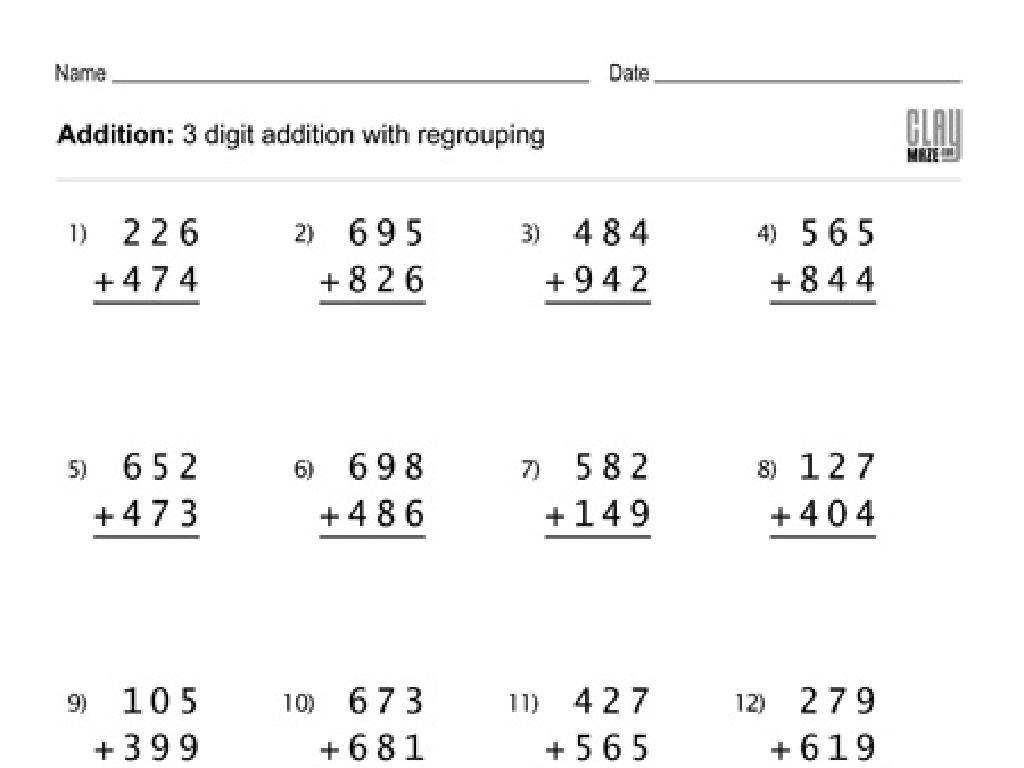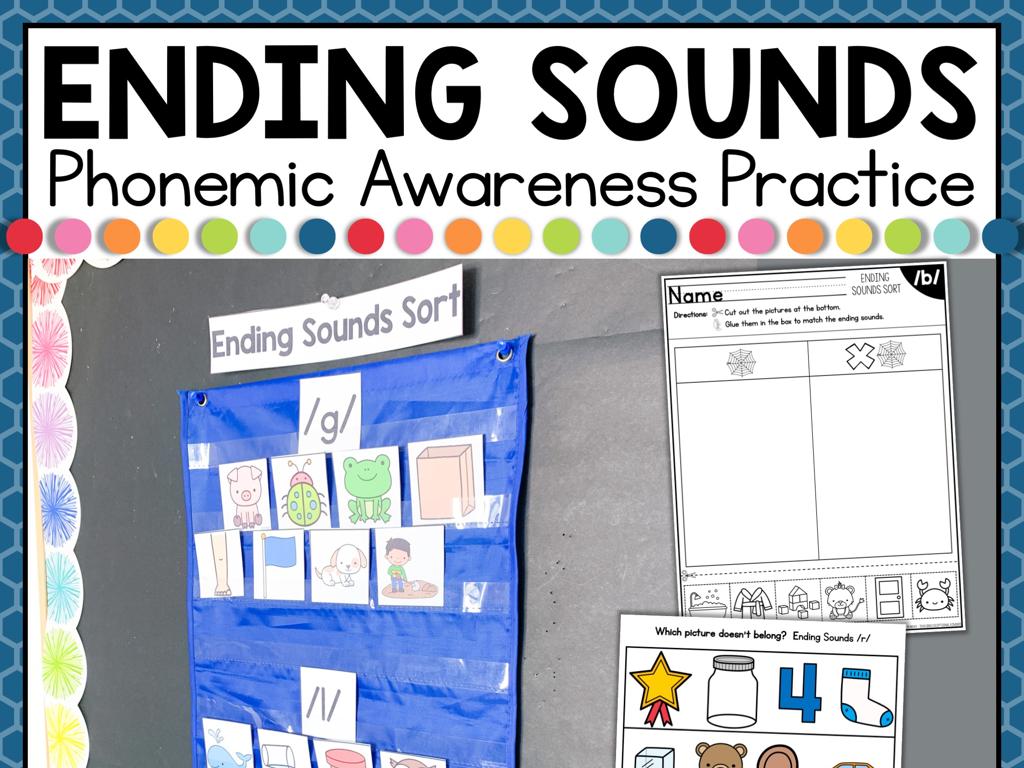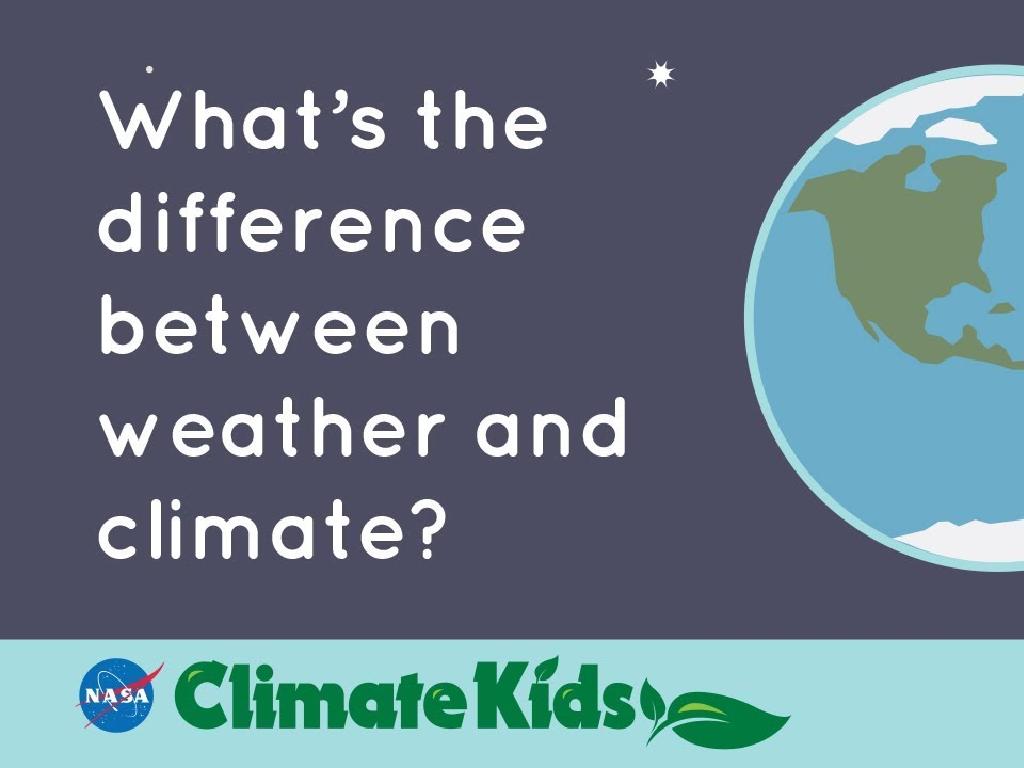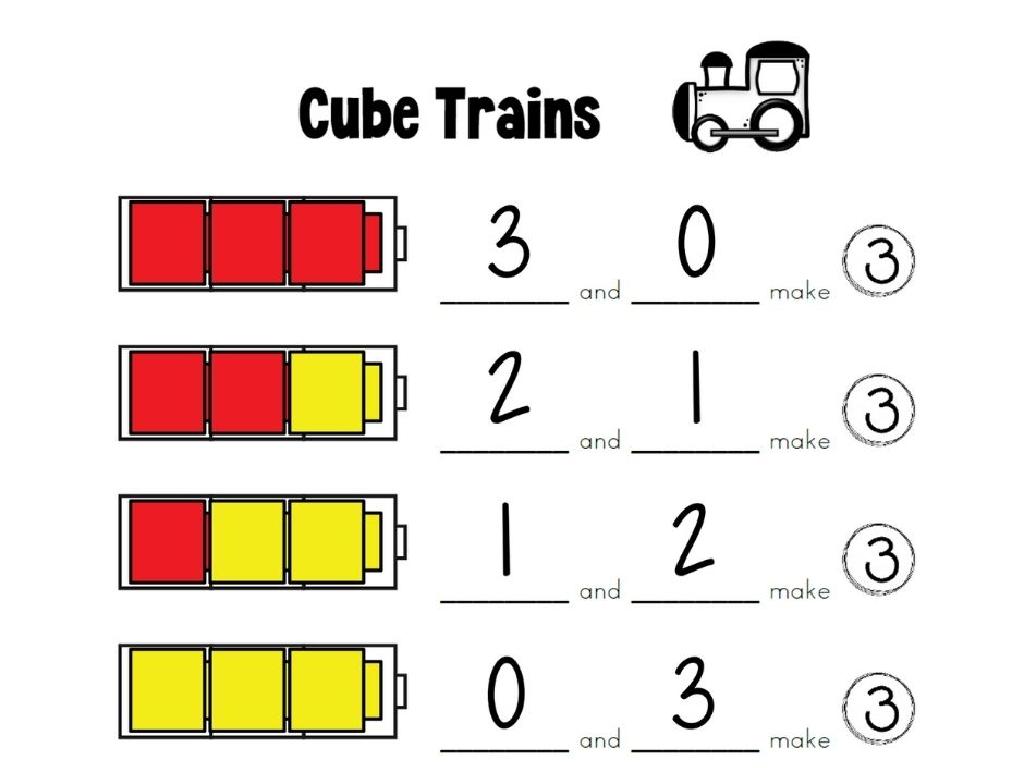Compare Amplitudes, Wavelengths, And Frequencies Of Waves
Subject: Science
Grade: Seventh grade
Topic: Waves
Please LOG IN to download the presentation. Access is available to registered users only.
View More Content
Welcome to Waves!: Understanding the Basics
– What are waves?
– Waves are disturbances that transfer energy from place to place.
– Importance of waves
– Waves carry sound and light; essential for communication and technology.
– Exploring Amplitude
– Amplitude is the wave’s height from rest to crest.
– Wavelength & Frequency
– Wavelength is the distance between two crests, and frequency is how often the waves pass a point.
|
Begin the lesson by defining waves as a concept and their role in transferring energy. Highlight the importance of waves in everyday life, such as in sound and light, which are crucial for communication and various technologies. Introduce amplitude as the measure of how ‘tall’ a wave is, which affects how loud or bright a wave can be. Explain that wavelength is the distance from one wave crest to the next, and frequency is the number of waves that pass a point in a given time period. These properties are fundamental to understanding how waves behave and interact with the environment. Use diagrams to illustrate these concepts and provide real-world examples, such as comparing the loudness of a whisper to a shout (amplitude), or the difference between radio and microwave frequencies.
Exploring the Nature of Waves
– Define a wave
– A wave is a disturbance that transfers energy through matter or space.
– Identify parts of a wave
– Crest: top, Trough: bottom, Amplitude: height, Wavelength: distance between crests
– Differentiate wave types
– Transverse waves move perpendicular to energy transfer, Longitudinal waves move parallel.
– Understand amplitude & wavelength
– Amplitude is wave’s height from rest to crest, wavelength is length from crest to crest.
|
Begin with a basic definition of a wave to set a foundation for understanding. Illustrate the parts of a wave, emphasizing the crest, trough, amplitude, and wavelength. Use diagrams to help students visualize these concepts. Introduce the two main types of waves, transverse and longitudinal, and discuss how their movements differ. Explain that amplitude measures the energy of a wave and wavelength determines its frequency. Provide examples such as sound waves for longitudinal and light waves for transverse to solidify their understanding. Encourage students to think of real-life examples of waves they encounter daily.
Amplitude of Waves
– Understanding wave amplitude
– Amplitude is the height from the rest position to the crest.
– Amplitude relates to wave energy
– Greater amplitude means more energy; think of loud sounds vs. soft sounds.
– Amplitude in transverse waves
– Visualize amplitude as the peak height above the rest line in waves like water ripples.
– Amplitude in longitudinal waves
– In waves like sound, amplitude is the compression’s density.
|
Amplitude is a key concept when studying waves as it represents the height of the wave from its rest position to the crest, which correlates to the energy carried by the wave. The more energy a wave has, the higher its amplitude. For transverse waves, such as those on water, amplitude is easily visualized as the height of the wave’s peak. For longitudinal waves, like sound, amplitude is seen in the density of the wave’s compressions. Use diagrams to illustrate both types of waves and their amplitudes. Encourage students to think of real-life examples, such as comparing the loudness of whispers to shouts (sound waves) or gentle ripples versus large ocean waves (water waves).
Wavelength of Waves
– Define wavelength
– Distance between consecutive crests or troughs in a wave
– Wavelength in various waves
– Compare light waves, sound waves, and water waves
– Wavelength vs. energy
– Shorter wavelengths have higher energy and frequency
– Impact on wave properties
|
This slide aims to explain the concept of wavelength and its significance in understanding different types of waves. Begin with a definition of wavelength as the distance between successive crests or troughs. Illustrate this with diagrams showing various types of waves, such as light, sound, and water waves, highlighting their differences in wavelength. Discuss the inverse relationship between wavelength and energy, emphasizing that waves with shorter wavelengths carry more energy and have higher frequencies. This foundational knowledge will help students grasp more complex concepts related to wave behavior and properties.
Frequency of Waves
– Understanding wave frequency
– Frequency measures how often waves pass a point in a given time
– Frequency: waves per second
– It’s counted as the number of complete waves, or cycles, per second
– Frequency’s role in energy
– Higher frequency means more energy; think of a high-pitched sound
– Observing frequency in action
– Use a rope to visualize: shake it slowly, then quickly, and observe changes
|
This slide introduces the concept of frequency in the context of waves and its relationship to energy. Frequency is a fundamental property of waves that determines how often they oscillate or pass a given point in a specific duration, typically one second. It’s measured in hertz (Hz). The higher the frequency, the more energy the wave carries, which can be demonstrated with sound waves higher frequency results in a higher-pitched sound. To help students grasp the concept, demonstrate with a rope: moving one end slowly shows low frequency, while moving it quickly shows high frequency. Encourage students to think of examples from daily life, such as the difference between the low rumble of thunder and the high pitch of a whistle.
Comparing Wave Properties
– Amplitude, wavelength, frequency differences
– Amplitude is wave height; wavelength is crest-to-crest distance; frequency is waves per second.
– Examples of varying wave properties
– High amplitude: loud sound; Long wavelength: radio waves; High frequency: blue light
– Interactive: Effects of changing properties
– How does altering amplitude or wavelength affect a wave’s energy and behavior?
– Understanding wave behavior
|
This slide aims to help students differentiate between amplitude, wavelength, and frequency of waves. Amplitude refers to the height of the wave and is related to the energy of the wave; the greater the amplitude, the more energy the wave carries. Wavelength is the distance between two consecutive crests or troughs and determines the type of wave (e.g., radio, microwave, visible light). Frequency is the number of waves that pass a point in one second and is inversely related to wavelength. Use real-world examples to illustrate these differences, such as comparing the loudness of sounds (amplitude) or the colors of light (frequency). The interactive component should engage students in predicting how changes in these properties affect wave behavior, such as the pitch of a sound when frequency changes. Encourage students to think critically about the relationship between these properties and their practical implications in everyday phenomena.
Waves in Our World: Applications & Technology
– Everyday uses of waves
– Waves carry sound, heat, and light.
– Tech relies on wave properties
– Amplitude and frequency affect device performance.
– Medical imaging uses waves
– Techniques like MRI use wave properties to create images.
– Communication systems & waves
– Radio, phones, and internet depend on wave frequencies.
|
This slide aims to show students the practical applications of waves in daily life and technology. Waves are not just a scientific concept but are integral to many things we take for granted, from listening to music to using a microwave. The amplitude, wavelength, and frequency of waves are crucial in designing and using technology. For instance, in medical imaging, the properties of waves are harnessed to look inside the human body without surgery, as in MRI and ultrasound. Communication technologies such as radio broadcasts, mobile phones, and internet connections all rely on the transmission and reception of waves at various frequencies. Encourage students to think of other examples where waves play a role in technology and discuss how changes in wave properties might affect their use.
Class Activity: Wave Simulation
– Simulate waves using ropes and slinkies
– Observe amplitude, wavelength, frequency changes
– Notice how stretching affects amplitude and wavelength
– Discuss wave changes impact
– How does shaking faster or slower change the wave?
– Record observations and conclusions
– Share findings with the class, compare results
|
This activity is designed to help students visualize and understand the concepts of amplitude, wavelength, and frequency in a hands-on way. Divide the class into small groups and provide each group with a rope or slinky. Have them create waves by shaking the rope/slinky and observe the changes as they adjust the amplitude (height), wavelength (distance between waves), and frequency (speed). Encourage them to discuss as a group how these changes affect the wave’s properties. Possible activities: 1) Measuring wave speed with different amplitudes, 2) Comparing wave patterns with different frequencies, 3) Creating a wave interference pattern with two slinkies, 4) Demonstrating standing waves, 5) Sketching observed wave patterns. This will facilitate a deeper understanding of wave behavior through interactive learning.
Conclusion: The Wonders of Waves
– Recap: Amplitude, Wavelength, Frequency
– Amplitude is wave’s height, wavelength is distance between peaks, frequency is waves per second
– Significance of wave understanding
– Waves are everywhere! They carry sound, light, and more, understanding them is key to grasping many scientific concepts
– Open floor for questions
– Reflect on today’s learning
– Think about how waves affect daily life and share any insights or confusions
|
This slide aims to summarize the key properties of waves and emphasize their importance in the natural world. Start by reviewing amplitude, wavelength, and frequency, ensuring students can differentiate between them. Highlight how waves are integral to many phenomena, from the sounds we hear to the colors we see. Encourage students to ask questions to clarify their understanding. Conclude by asking students to reflect on what they’ve learned and how it connects to their everyday experiences, fostering a deeper appreciation for the topic.






